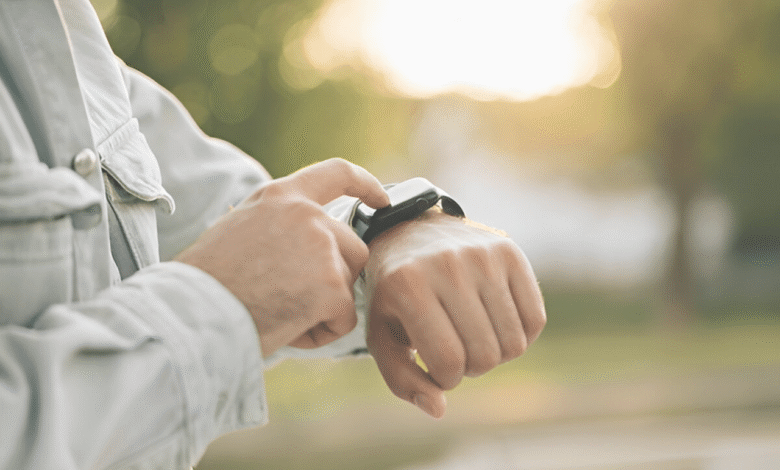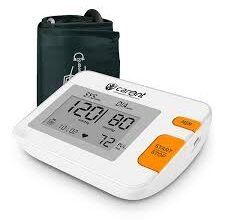Best Smartwatches for Monitoring Blood Pressure at Home
blood pressure Smartwatches. medical-grade smartwatches for accurate at-home BP monitoring. FDA-approved options with heart health tracking.

Monitoring blood pressure at home has become easier than ever, thanks to the latest advancements in wearable technology. Smartwatches with blood pressure tracking capabilities allow users to keep an eye on their cardiovascular health in real time, offering convenience and peace of mind. Whether you have hypertension, a family history of heart disease, or simply want to stay proactive about your well-being, these devices provide valuable insights without the need for bulky medical equipment.
With numerous options available, choosing the right blood pressure smartwatch can be challenging. This guide explores the top-rated wearables that deliver accurate readings, user-friendly features, and reliable health monitoring helping you make an informed decision for better heart health management at home.
Best Smartwatches for Monitoring Blood Pressure at Home
Why Monitor Blood Pressure at Home?
Regular blood pressure monitoring is crucial for detecting hypertension early and preventing complications like heart disease or stroke. Traditional blood pressure monitors require a cuff and can be cumbersome, but modern smartwatches with BP monitoring offer a seamless alternative. These devices use advanced optical sensors and algorithms to estimate blood pressure, providing real-time data. While they may not replace medical-grade devices entirely, they serve as excellent tools for tracking trends and alerting users to potential health issues.
How Do Smartwatches Measure Blood Pressure?
Most blood pressure smartwatches rely on PPG (photoplethysmography) sensors, which detect blood flow changes in the wrist. Some models also use ECG (electrocardiogram) technology for more precise readings. However, accuracy can vary, so it’s essential to choose a device validated by medical studies. For optimal results, users should calibrate their smartwatch BP monitor with a traditional cuff device periodically. Brands like Omron, Samsung, and Withings have developed clinically tested wearables that provide reliable blood pressure tracking.
Top Smartwatches for Blood Pressure Monitoring in 2024
Omron HeartGuide
The Omron HeartGuide is one of the few FDA-cleared smartwatches for blood pressure monitoring. It features an inflatable cuff inside the band, mimicking a traditional BP monitor for high accuracy. Beyond blood pressure tracking, it offers step counting, sleep analysis, and heart rate monitoring. Its medical-grade precision makes it ideal for users who need dependable hypertension management.
Samsung Galaxy Watch 6
The Samsung Galaxy Watch 6 includes blood pressure monitoring through the Samsung Health Monitor app. However, it requires initial calibration with a cuff-based device. This smartwatch excels in fitness tracking, ECG readings, and SpO2 monitoring, making it a versatile choice for overall health and wellness. Its sleek design and long battery life add to its appeal.
Withings ScanWatch 2
The Withings ScanWatch 2 combines medical-grade ECG and blood oxygen monitoring with BP estimation. While not as precise as cuff-based devices, it provides valuable trends for heart health tracking. Its long battery life (up to 30 days) and elegant design make it perfect for users who prefer a hybrid smartwatch with health monitoring capabilities.
Fitbit Sense 2
The Fitbit Sense 2 offers stress management tools, ECG tracking, and blood pressure trends through its PPG sensor. While it doesn’t provide exact BP readings, it helps users monitor fluctuations. With advanced sleep tracking and fitness metrics, this smartwatch is ideal for those focused on holistic wellness.
Garmin Venu 3
The Garmin Venu 3 is a top pick for fitness enthusiasts who also want blood pressure insights. It uses pulse ox sensors to estimate BP trends alongside Heart rate variability (HRV) and respiration tracking. Its durable build and extensive sports modes make it great for active users who prioritize cardiovascular health.
Factors to Consider When Choosing a Blood Pressure Smartwatch
Measurement Accuracy
Prioritize smartwatches with FDA clearance or clinical validation for blood pressure monitoring, as these undergo rigorous testing for reliability. Look for models that use both PPG (optical) and ECG sensors, as dual-sensor systems typically provide more precise readings. Consider devices that offer calibration reminders or automatic recalibration features to maintain measurement accuracy over time.
Comfort and Wearability for Continuous Use
Choose a lightweight design (ideally under 50g) with an adjustable, breathable band for all-day comfort, especially if you need frequent monitoring. Evaluate the watch’s form factor – slim profiles (under 12mm thick) with curved cases tend to fit better during measurements. Ensure the display is large enough (minimum 1.3″) to clearly read measurements without straining.
Charging Convenience
Look for at least 7-day battery life with continuous health monitoring to avoid frequent recharging disruptions. Prefer watches with quick-charge capabilities (50% in 30 minutes) for emergency top-ups before important measurements. Consider power-saving modes that maintain BP monitoring while disabling non-essential features to extend usage between charges.
Smart Features
Select watches that integrate with comprehensive health platforms (like Apple Health or Google Fit) for centralized data tracking and sharing with healthcare providers. Prioritize models offering additional health metrics like SpO2, stress levels, and irregular heartbeat detection for holistic monitoring. Ensure companion apps provide detailed historical trends and customizable alerts for abnormal BP readings.
Connectivity Options
Verify the watch works seamlessly with your smartphone’s operating system (iOS/Android) for full functionality. Look for Bluetooth 5.0+ for stable data syncing and Wi-Fi connectivity for automatic cloud backups. Consider models with emergency alert features that can notify contacts if dangerously high/low BP is detected.
Water Resistance
Choose at least IP68 or 5ATM water resistance for protection during handwashing and workouts. Look for scratch-resistant displays (preferably sapphire or Gorilla Glass) to maintain visibility of readings. Consider military-grade durability certifications if you have an active lifestyle that might subject the watch to impacts.
Limitations of Smartwatch Blood Pressure Monitors
Accuracy Varies by Model
While some FDA-cleared smartwatches provide clinically acceptable readings, most consumer-grade models offer estimates rather than medical-grade precision. Factors like improper fit, wrist position, and movement during measurement can significantly impact results. Unlike traditional arm cuffs, optical sensors struggle with consistent accuracy across different skin tones and wrist sizes.
Require Regular Calibration for Reliability
Most smartwatch BP monitors need frequent calibration (weekly or monthly) against a certified arm cuff device to maintain accuracy. Without proper calibration, readings may drift over time, potentially missing critical hypertension indicators. This dependency makes them less convenient than standalone medical monitors for users needing absolute reliability.
Not Suitable for Diagnostic Purposes
No smartwatch currently replaces professional medical devices for diagnosing hypertension or adjusting medication. Regulatory bodies classify them as “wellness tools” rather than diagnostic equipment. Patients with heart conditions or severe hypertension should always verify readings with clinical-grade monitors before making health decisions.
Affected by Environmental
Readings can be skewed by temperature extremes, sweat, tattoos, or even arm hair interfering with sensors. Unlike cuff-based monitors that measure arterial pressure directly, wrist-worn devices use algorithms that may not account for individual cardiovascular differences. Strenuous activity or irregular heart rhythms further reduce reliability.
Limited by Battery Life
Continuous BP monitoring drains battery life rapidly, forcing most watches to take spot readings instead of 24/7 tracking. Software updates or connectivity issues may temporarily disable features, unlike dedicated medical devices designed for uninterrupted operation. These technical limitations make them better for trend-spotting than critical health monitoring.
Read More: Top 5 Smart Health Gadgets You Should Own in 2025
Conclusion
Monitoring blood pressure at home has never been more convenient, thanks to the latest generation of smartwatches equipped with advanced health-tracking capabilities. These devices offer a practical solution for individuals managing hypertension or simply keeping tabs on their cardiovascular health. While they may not replace medical-grade monitors entirely, the best blood pressure smartwatches provide reliable trends and alerts, empowering users to take proactive steps toward better heart health.
When choosing a Smartwatches for blood pressure monitoring, prioritize accuracy, ease of use, and additional wellness features. Top brands like Omron, Samsung, and Withings lead the market with clinically validated options that blend functionality with style. By integrating one of these wearables into your daily routine, you can stay informed, detect potential issues early, and maintain better control over your overall well-being all from the comfort of home.
How accurate are smartwatches for blood pressure monitoring?
While not as precise as medical-grade cuff monitors, FDA-cleared models like the Omron HeartGuide provide clinically validated readings, while others track helpful trends.
Do blood pressure smartwatches require calibration?
Yes, most models need periodic calibration with a traditional arm cuff monitor to maintain measurement accuracy over time.
Which smartwatch is best for seniors monitoring hypertension?
The Omron HeartGuide is ideal for seniors, featuring an inflatable cuff for medical-grade accuracy and simple operation.
Can I use these smartwatches during workouts?
For best results, take readings while resting, as movement can affect accuracy, though many track heart rate trends during exercise.
How often should I check my blood pressure with a smartwatch?
Doctors recommend monitoring 2-3 times daily at consistent times for reliable tracking, especially if managing hypertension.










